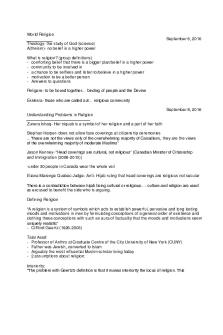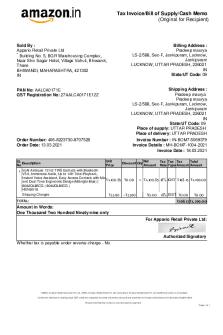The Known World summary PDF

| Title | The Known World summary |
|---|---|
| Course | StuDocu Summary Library EN |
| Institution | StuDocu University |
| Pages | 3 |
| File Size | 89.5 KB |
| File Type | |
| Total Downloads | 48 |
| Total Views | 145 |
Summary
Download The Known World summary PDF
Description
The Known World Summary The Known World, a novel by Edward P. Jones is about Henry Townsend, a former slave who becomes a slaveowner and the legacy he lives to his widow, Caldonia. Henry Townsend, the son of a man named Augustus, is born into slavery and uses his talents to earn his and his father’s freedom. Once freed, Henry purchases several slaves from William Robbins, who was once Henry’s master. The first slave Henry purchases is named Moses. Moses is a cruel man who Henry appoints to overseer. Henry’s actions drive a wedge between him and his father that remains in place for much of Henry’s life.
William Robbins is a powerful landowner—the most powerful in all of Manchester County, Virginia. He is a influential man, responsible for choosing the local sheriff, but considers himself trapped in an unhappy marriage. While his wife is a white woman, Robbins has sexual relationships with his slaves, ultimately having children with one of his slaves. He loves and educates and his mixed-race children, despite the fact that they’re not white. He is in his second such relationship when Henry gains his freedom and buys slaves from Robbins. However, that’s not all Robbins offers. He teaches Henry how to be a slave owner.
The local sheriff is named John Skiffington. While he doesn’t believe in owning slaves himself, he does believe in maintaining the status quo, believing the civil and “divine” laws in support of slavery to be important. When Skiffington’s cousin, Counsel, gives him a young slave girl named Minerva as a wedding present, he and his wife decide to take care of her. They raise her like their own daughter, but Skiffington is racked with guilt when she grows up and he feels romantically attracted to her.
After Henry dies, Skiffington must discover why slaves are disappearing from his plantation, now under the control of Caldonia, Henry’s widow. Skiffington suspects that it has something to do with cruel Moses, and that hunch proves to be true. Intending to marry Caldonia, Moses sends his wife, Alice, and son away. Skiffington suspects Moses of murdering them. He launches an investigation to find the truth, but ends up capturing Augustus and selling him into slavery again. Augustus tries to
walk home but is murdered by his new master. Moses, meanwhile, abandons his plan to marry Caldonia and flees.
William Robbins’ faith in John Skiffington fades in the wake of these events, prompting Skiffington to continue to hunt for Moses despite a toothache. He finds Moses in the home of a woman named Mildred, who will not give Moses back—and stands armed and ready to protect that stance. Enraged and in physical dental pain, Skiffington ends up shooting and killing Mildred. Counsel shoots Skiffington in response. Moses voluntarily surrenders to Counsel, who takes him back to town. He is injured to keep him from running away again, and spends the rest of his life being cared for by the new overseer’s wife, a woman whose miscarriage Moses caused.
Robbins has a stroke, which draws together his daughters—white and mixed-race alike. Caldonia ends up with Louis Cartwright, one of Robbins’ black children, and they run the plantation. As it turns out, the slaves that Moses sent away so that he could marry Caldonia are living in the city, thriving off of Alice’s artwork depicting life on the plantation. The story ends on the eve of the Civil War.
Several themes weave together the stories of the characters in The Known World. The impact of law and slavery, racial relations, and romantic relationships drive the characters’ decisions and therefore, the plot. One of the major themes under examination in The Known World is the sale of illegal slaves —that is, African Americans who have earned their freedom, like Augustus. Race is another important theme, and it permeates all of the relationships within the story. White Americans have ultimate power over Black American slaves, but their use of this power differs. Some are cruel, like the man who sold Augustus. Some are more progressive, like Robbins, who loves his white and mixed-race children equally.
Those relationships can also change the expectations of racial relations. While that happens, as with Robbins and his children, not to mention the two slaves he loves more than his wife, he still owns slaves and sells some of them to Henry Townsend. In a more abstract way, John Skiffington represents this ability to see Black people as human, as they should be seen, but yet takes no steps to change the law or to reinterpret Biblical laws as they were then understood.
Edward P. Jones wrote The Known World as his debut novel in 2003, and won the Pulitzer Prize....
Similar Free PDFs

The Known World summary
- 3 Pages

Ball World and the world
- 4 Pages

World-cities - Large summary
- 5 Pages

Exploring World Religions Summary
- 19 Pages

Chapter 6 - Summary World Art
- 2 Pages

Chapter 8 - Summary World Art
- 3 Pages

Business a changing world summary
- 25 Pages

Chapter 3 - Summary World Art
- 2 Pages

Introduction to World Cinema Summary
- 55 Pages
Popular Institutions
- Tinajero National High School - Annex
- Politeknik Caltex Riau
- Yokohama City University
- SGT University
- University of Al-Qadisiyah
- Divine Word College of Vigan
- Techniek College Rotterdam
- Universidade de Santiago
- Universiti Teknologi MARA Cawangan Johor Kampus Pasir Gudang
- Poltekkes Kemenkes Yogyakarta
- Baguio City National High School
- Colegio san marcos
- preparatoria uno
- Centro de Bachillerato Tecnológico Industrial y de Servicios No. 107
- Dalian Maritime University
- Quang Trung Secondary School
- Colegio Tecnológico en Informática
- Corporación Regional de Educación Superior
- Grupo CEDVA
- Dar Al Uloom University
- Centro de Estudios Preuniversitarios de la Universidad Nacional de Ingeniería
- 上智大学
- Aakash International School, Nuna Majara
- San Felipe Neri Catholic School
- Kang Chiao International School - New Taipei City
- Misamis Occidental National High School
- Institución Educativa Escuela Normal Juan Ladrilleros
- Kolehiyo ng Pantukan
- Batanes State College
- Instituto Continental
- Sekolah Menengah Kejuruan Kesehatan Kaltara (Tarakan)
- Colegio de La Inmaculada Concepcion - Cebu






